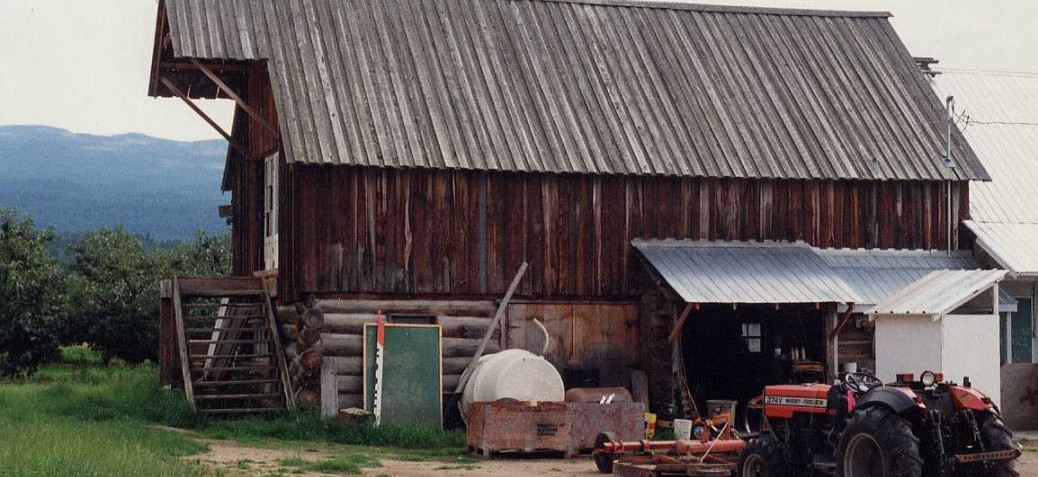Pooley Barn
Place Description
The historic place is the two-storey log and wood-siding Pooley Barn, built in 1904, with a one-storey addition of 1984, located at 3690 Pooley Road in the agricultural East Kelowna sector of the City of Kelowna.
Heritage Value
This barn has heritage value as one of the older farm buildings in the area and for its use in the orchard industry, particularly with the beginnings of the industry in Kelowna. The barn has been in continuous agricultural use since it was built in 1904, with its precise function and form shifting as a reflection of changes in fruit-growing technology.
The barn, with lower walls constructed from large logs taken from the property and the upper storey sided with vertical boards, was built in 1904, when W.R. ('Bob') Pooley established his orchard here. The orchard was one of the first in East Kelowna, which was developed, provided with irrigation from Canyon Creek, and subdivided into blocks for orchard use by the Kelowna Land and Orchard Company, of which Pooley was a promoter. Pooley selected this prime upper bench location for his own personal orchard and home.
The importance of barns in farm operations may be seen in the fact (documented by photographic evidence) that the barn was constructed before the house, which sits on the bank above it, so that the animals had proper accommodation while only a one-room log cabin was available for human housing. Since all equipment was hauled and operated by natural, organic horsepower, the ground level of the barn was divided into horse stalls, while the loft was used to store hay. While the horses performed valuable orchard work, their demands were also large - more than one-quarter of the property was set in pasture and hayfields to feed the horses, rather than in fruit trees for the cash crop.
The original function of this barn, like so many others, was lost when work horses were replaced by tractors and trucks in the 1930s and 1940s, although the Pooley's kept saddle horses here until the 1960s.
The barn was then used as workshop and for storage. In 1973 a concrete floor and foundations were put in place, and the rotten lowest log removed, while a new plank roof (replacing the original 1904 roof) was put on. The barn housed a sorting and packing line for cherries in the 1980s, and in 1984 a one-storey, steeply-pitched gabled, cold vertical-board storage room was added at the west end. More recently a metal roof replaced the 1973 wooden planks, which had proved unsatisfactory since long clear lumber, such as that used in 1904, was no longer available in 1973.
As workshop and machinery storage remain necessary uses, the barn continues to be an integral part of the continuing orchard operation, ninety years after it was built.
Character Defining Elements
- Barn building is part of a working farm, and forms a group with adjacent buildings
- Pioneer vernacular barn
- Two-storey, gable-roofed main barn, with squared lots forming the ground-floor walls and vertical boards over a wood frame on the upper floor
- One-storey, steep-roofed cold storage addition at end




